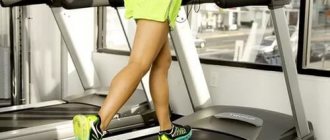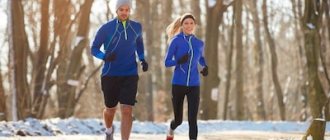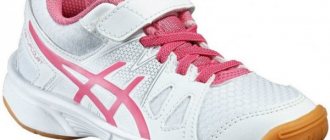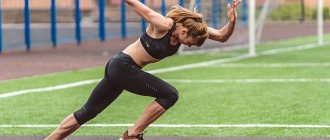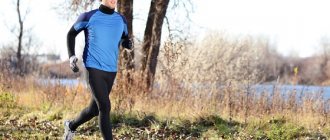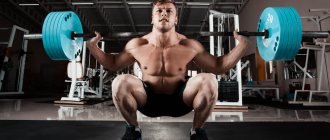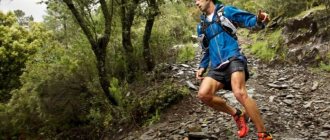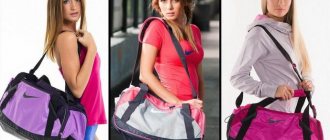An active lifestyle and morning jogging always give you good health and a cheerful mood. But with the onset of the cold season, many people stop outdoor training, one of the reasons is the difficulty in choosing suitable sports shoes. Today, designers have solved this problem by creating winter running shoes that are suitable for those who like to jog in the snow. A wide range of products from famous brands and mass market brands will allow you to choose the right option for yourself. But when looking for a brand new pair of running shoes, you need to be extremely careful, because even a minor design detail can radically affect the quality of your training.
General requirements for winter sports shoes
When choosing winter running shoes, it is first of all important to make sure that the shoes meet hygienic requirements. It should be different:
- Convenience and lightness, the ability to retain shape and flexibility when exposed to moisture.
- The strength of the material, low thermal conductivity, so that the feet do not freeze and do not suffer from mechanical stress.
- Proper design and ventilation. This means that the product must be sufficiently ventilated to prevent overheating of the feet and sweating.
If winter shoes do not meet hygienic requirements, then during running sweat will accumulate inside them, which can lead to hypothermia. The shape of the sneakers should be such that they fit snugly to the foot and are comfortable to wear. Also important are:
- properties of the sole - it must be strong, flexible, complemented by an anti-slip coating;
- the presence of spikes - rubber or, as an option, completely removable;
- a high tongue and a special design of lace loops that prevent snow from getting inside the sneaker.
Winter running shoes should be light, have shock-absorbing properties, that is, absorb part of the load, and distribute the rest over the support area.
Soft and resilient midsole
Padded tongue eliminates pressure from laces
Asymmetrical lacing
Wear-resistant inserts on the sole
Split loops
Flexibility
What do the terms hyperpronator, neutral pronator and hypopronator mean?
Let's get acquainted with the above concepts and find out what each of them means.
Overpronator or flat feet
Flat feet (Fig. 1) are a problem not only for modern athletes, but also for ordinary people who belong to the so-called overpronators. What causes flat feet? Of course, the wrong shoes are what we start wearing from early childhood. Look at the sole of your sneakers, sneakers, flip-flops and any other shoes - they are guaranteed to be 90% flat, so why should your foot have a different shape? By buying shoes with flat soles, no matter whether they are comfortable or not, we expose ourselves to the risk of developing flat feet. In people with overpronator, the foot rolls inward, which puts excess stress on the back and knees. To avoid health problems, you need sneakers with support , these are classified as Control . Please note that Control class sneakers are not intended for running, so running in such sneakers can lead to various injuries, be careful!
Neutral pronator
This is the most common type of foot structure, the so-called “neutral foot” (Fig. 2). It means nothing more than the correct position of the foot while walking or running. During movement, the body weight is evenly distributed throughout the entire foot from the heel to the toes. People who have a neutral pronator need a shoe with good cushioning , but do not need increased heel support. Shoes suitable for people with a neutral pronator are classified as Support .
Hypopronator
This is the rarest type of foot structure, which is characterized by low movement of the foot in the inner part, that is, a greater percentage of contact with the surface occurs on the outer part of the foot.
Runners with a high arch of the foot can be classified as hypopronators (Fig. 3). People with this type of foot need highly shock-absorbing shoes belonging to the Neutral .
Design features
The criteria for choosing sneakers include not only financial capabilities and personal preferences. It is necessary to take into account other factors, first of all paying attention to the design features of the product.
Top
It is important that the toe portion of the shoe is appropriate in length and width, allowing free movement of the toes. Usually leather is used for the upper. It has a number of advantages:
- more durable;
- moderately soft;
- provides protection against mechanical damage;
- has low thermal conductivity, due to which sweat evaporates evenly.
But leather is not always suitable for winter sneakers, as it absorbs moisture well. Your feet will quickly get wet and cold in it. For the same reason, you should not choose models with suede uppers. Fur in such shoes will also be inappropriate. To sew the upper part, a material should be used that allows the legs to “breathe” while preventing exposure to moisture and cold.
Often, in the production of running shoes for winter, a special Gore-Tex membrane fabric is used. On the outside, it does not allow liquid to pass through, providing 100% waterproofness, but at the same time freely releases steam; it can be used for running in the most difficult weather conditions in the off-season. There are models covered inside with insulation, thanks to which they are completely resistant to snow, frost, and humidity.
Among winter sneakers, the most popular are high-top models or textile sock sneakers. They fit snugly to the foot, providing reliable protection from the cold.
The material used to make winter models differs significantly from their summer counterparts. To produce them, designers use denser, solid fabrics. However, no matter what fashion dictates, for winter jogging it is better to give preference to membrane insulation, avoiding options made of suede, leather, and fur.
La Sportiva Crossover 2.0 with high collar
Salomon SnowCross cs 2.0 with Climashield thermostatic membrane
Salomon Wings with Gore-Tex technology
Inov8 All Terrain Gaiter with Waterproof Gaiters
Sole
Winter running shoes require a strong, durable sole that does not bend and is resistant to low temperatures. If an athlete constantly moves in extreme conditions, protective elements are needed: supporting side elements and inserts, dense mesh, anti-slip coating.
For running in winter, sneakers are equipped with a sole made of special materials that prevent it from becoming rough and cracking when exposed to low temperatures. Shock absorption properties are also important. For this purpose, the base is equipped with a middle layer of silicone gel. It should be located under the heel and ball of the big toe, so the load on the knees and spine will be lower.
Shoes for running on flat surfaces in the cold season should have a strong, smooth sole. Typically this element is made from different materials, the most popular:
- BRS 1000. This is carbon rubber, its disadvantage is that the raw material leaves dark marks on the floor, although it provides increased strength.
- Clean rubber.
- DRC rubber compound is a hard, wear-resistant, dense material.
- Duralon is a special composition of synthetic rubber and air micropores. This material provides a light, smooth ride, but wears out quickly.
Nike Air Presto with BRS 1000 sole
Demix with rubber sole
Bona with DRC sole
Nike Air Presto with Duralon sole
Additionally, for running on snow and ice, you will need treads on the sole. It is worth choosing winter studded models, as they will provide a full workout and will also help to avoid pain in muscles and joints. According to the type of studs they are:
- Built-in. They cannot be removed, which becomes a big disadvantage if the spikes break. Meanwhile, the fastening strength and reliability here are above all praise.
- Removable. Suitable for regions with unstable weather conditions. The location of the spikes is variable; it can be adjusted depending on the specific load during the training process. The places where individual elements are removed are closed with plugs that prevent dirt from getting inside. Broken spikes can be easily replaced with new ones.
- Invoices. These studded sneakers are also ideal for all weather conditions. They are not as comfortable as the previous ones, but they are useful for running on ice.
Salomon with built-in studs
Asics Gel-Arctic 4 with removable studs
Overhead spikes
Sneakers with spikes for winter training are equipped with a variety of protectors:
- Herringbone - necessary for reliable adhesion to the running surface. These shoes are usually chosen by sprinters.
- Needle-shaped - such spikes are also used during sprinting.
- Pyramid - ideal for jogging and off-road.
- With studs – these studs are thicker at the ends, so they are installed on models for obstacle racing.
If you take into account all these nuances and choose the right shoes, regardless of weather conditions, your workouts will be comfortable, easy and safe.
Which sneakers to choose
1. If you just decide to run for yourself, choose training sneakers with a thicker and well-cushioned heel. Mesh inserts, even in “autumn” models, will make sports more comfortable.
2. Professional athletes who constantly participate in competitions will additionally need a lightweight pair of sneakers with maximum foot support.
3. Fans of winter jogging on the street are better off choosing a good insulated model made of Gore-Tex with a thick sole with tread and studs.
4. Residents of villages on the periphery and those who fundamentally choose dirt roads for running need medium-weight sneakers with a thick but very flexible sole with a curved toe and a powerful tread. Also here you will need good shock absorption and reliable coverage of the leg, otherwise dislocation cannot be avoided.
5. If you are losing weight, choose sneakers with maximum cushioning. This way you will reduce the load on your shin and knee, make the work easier on your feet, and you will get less tired, which means you can run longer.
Popular models
For people who prefer road running, the eponymous road running sneakers are suitable. Such models are resistant to moisture and are optimal for jogging on compacted snow and cleaned asphalt. They are also not afraid of off-season rains. Typically, a membrane material made of polytetrafluoroethylene or Teflon is used for production - it is not blown, gets wet in exceptional cases, and the foot still does not freeze.
In addition to road bikes, there are other models for winter:
- Trail running shoes. The rigid sole bends easily at the level of the toe joint. Dense material prevents foot contamination. A number of models have a special sock that softens impacts on stones and tree roots. A tongue sewn along the contour is used as another protective mechanism; it is additionally covered by an elastic insert. For soft, sticky surfaces (wet soil, clay), running shoes with aggressive protruding elements are suitable. To make it more convenient to run in the snow in winter, metal spikes are added to them.
- Marathons. Officially, such a name does not exist. It means the lightest, most flexible sneakers possible. They are used for natural running. The essence of the model is to run as easily as possible, without making much effort. To do this, use shoes with low soles and minimal drop from heel to toe. The best winter running shoes for this kind of running should be lightweight and comfortable.
Today, sports shoes receive a lot of attention. This area is actively developing - manufacturers are constantly conducting research aimed at inventing new unique materials and technological solutions.
Road racers
For trail running
Marathons
Key Features of Good Running Shoes
As we mentioned earlier, running shoes are not just about technology, functionality or a logo, today they are a “sophisticated device” that protects your feet and overall health. When choosing the best running shoes, you need to compare several different pairs, and we will tell you what you should pay special attention to below.
9 Features of a Good Running Shoe:
- Lightweight and ergonomic design;
- Breathable body;
- Profiled, flexible sole that improves the grip of the sole on the ground;
- Reinforced lace fastenings;
- Orthopedic insole (reduces leg fatigue);
- Soft tongue of sneakers (prevents feet from rubbing);
- Profiled Achilles tendon protection;
- Additional fixing strap with Velcro;
- Reinforcement of the sole (shank) (increases the hardness of the sneakers while running on a variety of terrain).
Want to add your item? Write about it in the comments.
Design and color
To make winter running more enjoyable, designers create sneakers in a variety of colors. The range of shoes is very wide. However, most often buyers prefer neon green, pink and blue models. In such options, sneakers for women and men are offered equally. Multi-colored models are more common than products in the same color scheme. Of course, for lovers of classic shades, there are sneakers for men and women in a laconic design in black and gray. White is not very popular for winter running shoes, as it simply blends in with the snow. Although many users consider this a plus - the runner is not distracted by bright elements in his peripheral vision during the training process.
It is better to choose models of rich colors with reflective stripes so that car drivers and cyclists can see the runner from afar.
Many runners who not only play sports, but also want to be trendy, choose the color of their sneakers that will be in harmony with the rest of their jogging equipment.
What you need to know about running in winter?
Running in winter has special charms that are not characteristic of any other season. At this time, the athlete encounters additional difficulties and obstacles, occurring in the form of a slippery surface alternating with snow, asphalt and uneven surfaces with blocks of ice. No less difficult is created by increased humidity in the winter, which instantly affects the state of the body and the well-being of the runner.
Definitely, summer shoes are completely unsuitable for jogging in winter, since they are not only sensitive to cold, but also cannot stand on slippery and uneven surfaces. Lightweight sneakers instantly allow moisture to pass through, which exposes the athlete to a huge risk of getting sick.
In addition, incorrectly selected winter sneakers with spikes for active running in the snow significantly increases the load on the legs. The runner not only does not get a full workout, but also dooms himself to torment in the form of pain in the joints and muscles.
Winter models for children
Children's sneakers have a number of features that distinguish them from adult models and must be taken into account by manufacturers:
- Additionally, the corners of the sole are beveled in the heel area, which will help avoid injuries.
- Increased softness of the soles, which protects against the risk of unnatural foot placement, prevents the development of flat feet.
- The presence of spikes on the sole.
- Waterproof shoe material that protects from dirt and snow.
- The presence of airtight insulation.
Thanks to the correct selection of the model, it will be possible to protect the child’s feet not only from cold and dirt, but also from all kinds of injuries on an icy winter road.
The last stage of choosing running shoes
After reading this material, you will be able to buy high-quality running sneakers without any problems. However, before going to the store, ask yourself 6 questions:
- What is my experience as a runner and level of interest in running?
- How many kilometers do I walk/run during the day?
- Am I running as an amateur or preparing for serious competitions?
- In what area do I plan to train?
- How much do I weigh and how tall am I?
- What is the arch of my foot?
By answering these questions, you will get a clear picture of the running shoes you need. And even if you were unable to choose sneakers on your own, our store consultant will help you make the right choice, taking into account your individual parameters.
We hope that this article was able to help you and answer the question “Which running shoes to choose?” Still have questions? Ask them in the comments.
How to choose the optimal model
It is useful for everyone to know how to choose running shoes for winter, since a high-quality model will last a long time and give a lot of pleasant training experiences.
Insulation
When choosing sneakers with insulation, you should take into account your running speed and heart rate, since at a fast pace, blood circulation accelerates and hot blood flows to the limbs. Therefore, shoes that are too warm are not suitable for intense training. For slow running in winter, models equipped with insulation are optimal. For such cases, Gore-Tex material is suitable, which does not allow moisture to penetrate, but allows air to pass through and provides thermal insulation. Thanks to this combination, water and snow will not be able to get inside the sneaker, and the moisture evaporates out through special pores.
The longer the workout, the more attention should be paid to the thermal protective properties of the sneakers.
It is also important to pay attention to the duration of the workout. If you run in cold air for more than an hour at a slow pace, the risk of hypothermia in your feet increases. In this situation, shoes with membrane fabric will not be enough. Additionally, you should insulate your feet with a neoprene sock. It is easily inserted inside the sneakers, fits tightly to the foot, retains heat, and protects from moisture. Compared to a membrane, this is a more economical option, but it allows air to pass through worse.
Presence of thorns
In winter, runners face mud, snow, and ice, so they need shoes that will allow them to move freely on any surface. If an athlete plans to run on asphalt, preference should be given to road models. It is better to overcome mud and snow in trail models, and it is easier to run on ice in shoes with metal spikes.
Overhead, built-in or removable studs will make off-road running much easier and help avoid injuries and falls.
Top rated running shoes
Sports publications often put Mizuno and Asics sneakers in the top list of Japanese manufacturers .
First of all, this choice is explained by the fact that these companies focus on the needs of professional athletes and annually present technological innovations to the consumer with reviews.
American and European brands also stand out in the rankings of the best because of their reliability, fame and numerous marketing strategies.
Despite this, every athletics fan chooses running shoes based on individual performance and personal preferences.
Popular brands
To select high-quality models, you should first consider products offered by well-known brands:
- Nike. The manufacturer produces models for different weather conditions. If winter is not accompanied by severe frosts, options with minimal insulation are suitable. For temperatures below minus 10, massive products with innovative systems with shock-absorbing properties are offered. This feature provides a light, springy step without putting pressure on the joints.
- Reebok. To keep the products warm in winter, the inside is lined with nubuck and additional linings. The models are equipped with textile inserts, as well as a wide tongue that prevents moisture from penetrating inside. Sometimes a stationary spike is installed, useful for running over rough terrain.
- Adidas. Thermal insulation, air tightness, and comfort level of these shoes are excellent. For winter, products are made with high tops, supplemented with linings. There are leatherette options, but such models are not very practical for daily runs.
Lunarglide 7 flash from Nike
Gore-Tex from Reebok
Terrex Boost from Adidas
To summarize, it is worth recommending that when choosing, first of all, pay attention to the thermal insulation properties, strength, and waterproofness of shoes. These properties will allow you to train on any day, regardless of weather conditions.
What should you pay attention to when choosing sneakers for winter running?
Sports stores, Internet sites and markets offer a huge number of models of all kinds of winter sneakers. But how can you choose among them the truly correct and high-quality shoes that will be ideal for you? When you go shopping for winter sneakers, examine each model in detail, sensibly assessing its advantages and disadvantages. An important point is the region of residence. The climatic features of the winter season should also be taken into account when choosing winter running shoes.
This is interesting
- [uaf_vkcount url='https://beginogi.ru/kak-pravilno-nachat-begat-dlya-nachinayushhih-uroki-i-programmyi-bega/']
How to start running correctly: running lessons and programs for beginners
- [uaf_vkcount url='https://beginogi.ru/kak-vliyaet-na-organizm-probezhka-pered-snom-i-chto-delat-esli-posle-utrenney-probezhki-hochetsya-spat/']
How jogging before bed affects the body and what to do if you feel sleepy after a morning jog
- [uaf_vkcount url='https://beginogi.ru/biomehanika-hodbyi-i-bega-chto-nuzhno-znat-o-biomehanike-myishts-cheloveka/']
Biomechanics of walking and running: what do you need to know about the biomechanics of human muscles?
Material
The material in winter sneakers should be much more solid than in the summer model. Despite the fact that the latter option allows air to pass through well, it is not able to protect your feet even in mild frosts.
You should avoid sneakers made of leather, as they absorb moisture incredibly strongly. Reagents and salt, often spilled everywhere in winter, instantly corrode and spoil the skin. After a few runs like this, not a trace will remain of your shoes.
Give preference to sneakers made of lightweight and waterproof material . The best choice would be a membrane material with additional insulation.
Protection
Waterproof protection is a must in winter sneakers. It comes in two main varieties.
Water-repellent membrane - sneakers with this coating are suitable for those whose winters are predominantly warm, accompanied by slush and not too low temperatures. These shoes can be used for running in late autumn or early spring.
Absolutely waterproof - these shoes are used in extreme cold. These sneakers are absolutely not afraid of snow and any humidity.
Sole
Brands that produce winter shoes offer models with different types of soles. So, the buyer can choose sneakers with rough or rubber spikes. An alternative option would be an ordinary flexible sole, which is in no way inferior to fashionable and popular spikes.
Additional items
It is advisable that winter shoes have reflective elements . In early winter mornings and evenings, visibility is quite poor, which creates additional difficulty and danger for runners. The athlete runs the risk of being hit by a cyclist or motorist. To prevent this from happening, you don’t need to be afraid to look funny. In this case, any potential danger to the health and life of the athlete should be sensibly assessed.
Photo
Studded sneakers for winter running: advantages and disadvantages
Winter running shoes with spikes are comfortable enough for long distance running and long training on frozen ground. They, like any type of shoe, have not only advantages, but also disadvantages. The main advantages of sneakers with spikes are as follows:
- The spikes cope well with a wide variety of soil conditions in winter, be it ice, snow, puddles or frozen, dry soil.
- Special winter sneakers for training have thick soles. This is the main difference between winter studded boots and the usual summer version of “studded boots”. Regular summer sneakers with spikes are not suitable for winter jogging. This is due to the thin sole, which freezes quickly in sub-zero temperatures.
- The spikes on winter sneakers can be easily removed. This makes it possible to adapt your shoes to weather conditions or a specific type of workout.
- Despite the significant thickness of the soles of winter studded sneakers, high-quality models are highly flexible and perfectly follow the shape of the foot while walking and running.
The disadvantages of the winter version of studded sneakers include the following parameters:
- Running requires a lot of effort. This is due to the fact that the thick sole and additional studs significantly make the shoes heavier.
- The likelihood of tripping increases. Thorns are not as insidious as chains, which can even make you fall off your feet by tripping over a branch lying on the ground. But by the end of the workout, a tired runner can still accidentally catch a spike on uneven ground and get injured.
- Not all sneaker models allow you to remove the cleats at will. When it’s cold and dank outside, the spikes will get in the way, and the summer version of the sneakers is still inappropriate, this parameter significantly complicates the task of choosing sneakers for the weather, because it is not possible to unhook the spikes.
This is interesting
- [uaf_vkcount url='https://beginogi.ru/begovyie-krossovki-saucony-preimushhestva-i-nedostatki/']
Saucony running shoes: advantages and disadvantages
